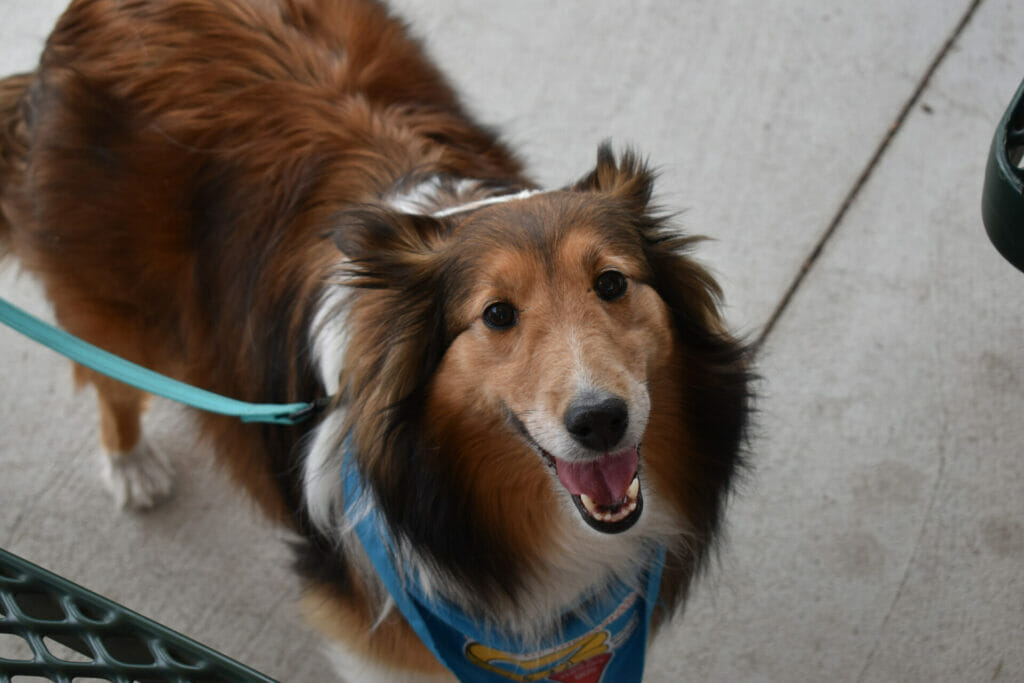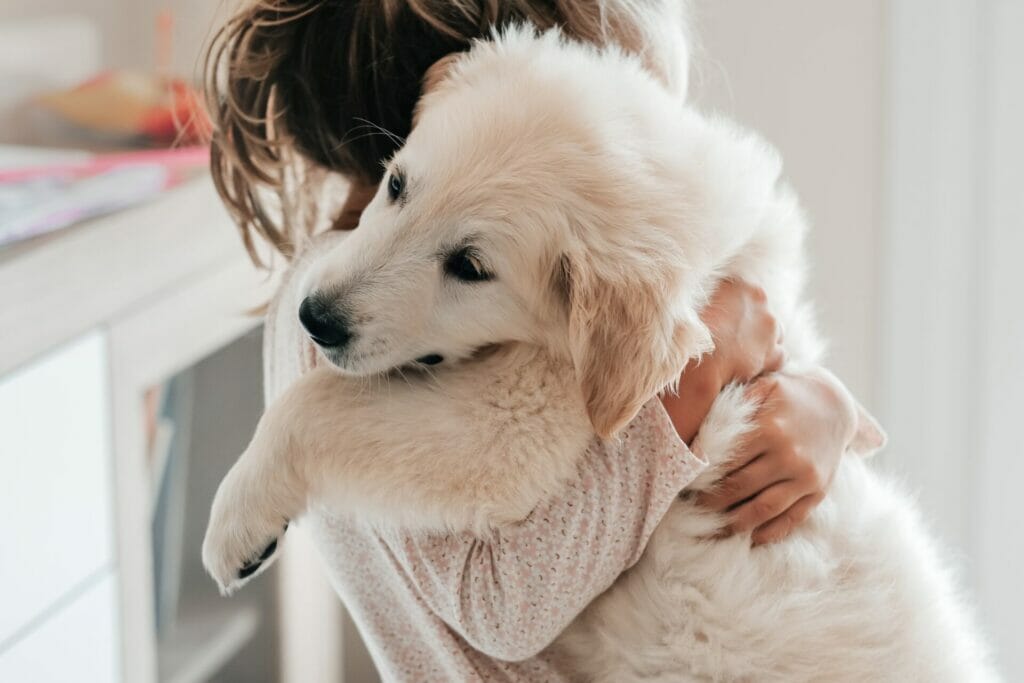Therapy Dogs are kind and gentle dogs who, along with their owner, volunteer to go and visit people in hospitals, nursing homes, schools, and in the aftermath of disasters. Being a therapy dog isn’t easy; it takes a special dog to do this job. Therapy dogs provide a calming presence while they engage with people. Many local humane societies and community groups nationwide have training programs to help people and dogs learn more about becoming therapy dogs and determine if they and their dogs will enjoy the work. To become a therapy dog, dogs and their owners need to have mastered basic obedience skills. Therapy dog/handler teams are then certified through a therapy dog organization before they are allowed to begin visiting. Here are some natural behavioral traits that could be a sign your dog might excel as a therapy dog:
1. Calmness:
One of a therapy dog’s most important qualities is a calm temperament and demeanor. The job of a therapy dog is to be a calming presence in the hospitals or schools where they visit. The dogs who are most successful with therapy dog careers are naturally calm. These dogs are not easily startled or excited by things. This naturally calm attitude will help these dogs connect with needy people. Dogs can be taught to follow cues, including to relax on cue, but a natural calmness is beneficial for therapy dogs.

2. Confidence
Therapy dogs need to be confident and self-assured in a variety of settings. Therapy dogs will visit hospitals, nursing homes, schools, and other care facilities. Therapy dogs shouldn’t spook easily or be distressed by new experiences. Therapy dogs will interact with many things that can upset many dogs, including wheelchairs, walkers, hospital equipment, slippery floors, upset people, and other unpredictable situations. Therapy dogs must be calm and confident regardless of their surroundings, so natural confidence is helpful.
3. Friendly:
Therapy dogs need to genuinely love hanging with people and be friendly toward all people. Therapy dogs should be curious and friendly but also neutral toward people. Therapy dogs shouldn’t be nervous or reactive toward people but should not be overly excited. Therapy dogs will see a diversity of people depending on the location where they work. If your dog is comfortable and happy to engage with all people, that is a good sign that your dog might be successful as a therapy dog in the future.
4. Gentle:
Therapy dogs must be very gentle when engaging with people during their visits. In many cases, the people your therapy dog spends time with may be individuals who are medically fragile or ill. Therapy dogs can’t jump up or paw at people as that could be frightening and cause injuries. During training, dogs will learn appropriate ways to interact with people on their visits. However, a naturally gentle disposition and desire to be gentle when engaging with people can help dogs to excel as therapy dogs.

5. Dog Neutral:
Therapy dogs often work in teams. This means multiple therapy dogs will visit facilities at the same time. Therapy dogs must ignore all other dogs while they are working. If you and your dog plan to train to become therapy dogs, one of the skills you’ll practice is following cues around other dogs without being distracted. Therapy dogs can’t be dog reactive or overly excited about other dogs, so natural neutrality about other dogs is helpful.
6. Love of Learning:
Therapy dogs don’t perform any specific tasks for the people they visit, and their primary role is to provide comfort to people. However, it’s essential that therapy dogs have basic training and follow cues when given. Before therapy dog teams are certified, basic obedience is part of the evaluation process. In addition, continuing to learn new skills like different tricks can help dogs to break the ice with people who they visit and to help bring joy on their visits.




















